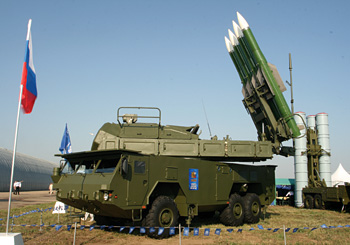INDIAN ARMED FORCES CHIEFS ON OUR RELENTLESS AND FOCUSED PUBLISHING EFFORTS

The insightful articles, inspiring narrations and analytical perspectives presented by the Editorial Team, establish an alluring connect with the reader. My compliments and best wishes to SP Guide Publications.

"Over the past 60 years, the growth of SP Guide Publications has mirrored the rising stature of Indian Navy. Its well-researched and informative magazines on Defence and Aerospace sector have served to shape an educated opinion of our military personnel, policy makers and the public alike. I wish SP's Publication team continued success, fair winds and following seas in all future endeavour!"

Since, its inception in 1964, SP Guide Publications has consistently demonstrated commitment to high-quality journalism in the aerospace and defence sectors, earning a well-deserved reputation as Asia's largest media house in this domain. I wish SP Guide Publications continued success in its pursuit of excellence.
- Appointments Committee of Cabinet approves one-month extension in service of Chief of the Army Staff
- Admiral Dinesh K. Tripathi assumes Command of the Indian Navy as 26th Chief of the Naval Staff
- Prime Minister witnesses 'Bharat Shakti' – a Tri-Services Firing and Manoeuvre Exercise in Pokhran, Rajasthan
- Interim Defence Budget 2024-25 — An Analysis
- Union Defence budget 2024
- Prime Minister Modi Commemorates Indian Navy Day in a Grand Ceremony
Impenetrable defence

It is impossible to discuss the issue of full-fledged state security without a reliable air and missile defence system. This is sort of an axiom. Especially nowadays when there are so many examples of armed conflicts whose outcome has been decided by massed air strikes.
For those who have a notion of problems related to building air and missile defence systems for administrative and industrial installations and troops, real threats are seen in both aerodynamic air vehicles and ballistic missiles. Integrated solution to the problem is found as a system capable of engaging the whole range of airborne targets. All major world arms manufacturers are actively working on this. And Russians have made the best progress here.
Russia, a traditional leader in this technology, promotes via Rosoboronexport a wide range of modern anti-air assets able to reliably protect administrative and political institutions, infrastructure installations, troops formations and military bases, minerals field production facilities, etc. It makes versatile air defence equipment comprising the Buk-M2E medium-range and Antey-2500 long-range air defence missile systems.
One battalion of the Buk-M2E multichannel medium-range air defence missile system can engage simultaneously 24 air targets approaching from any directions at the range of up to 45 to 50 km. It is designed to engage strategic and tactical aircraft, cruise missiles, helicopters and other aerodynamic air vehicles within the entire operational envelopes (from 0.015 km to 25 km) under intensive enemy electronic countermeasures and counterfire. The system is also effective when engaging maritime and groundbased radio-contrast targets.
The famous Antey-2500 system provides air target engagement at the range of 350 km and at the altitude of up to 30 km. It is designed to protect major administrative, industrial and military installations, troop groupings from massed air strikes delivered by any modern air attack assets including aircraft of all types and ballistic missiles with launch range of up to 2,500 km, as well as cruise missiles. In other words it sifts a great number of threats of all types at the distant approaches. Having all its elements mounted on the unified all-terrain tracked chassis, the Antey-2500 system can deploy from the march and be ready for fire within 5 minutes.
Summing up, it means that Russian-made air and missile defence systems can be smoothly integrated into existing air defence systems of any country and substantially enhance fighting capacity of its armed forces. Reliability, high quality, automation, unique combat performance and, what’s more important, guaranteed security – those are benefits for countries protected by these highly effective weapon systems.





